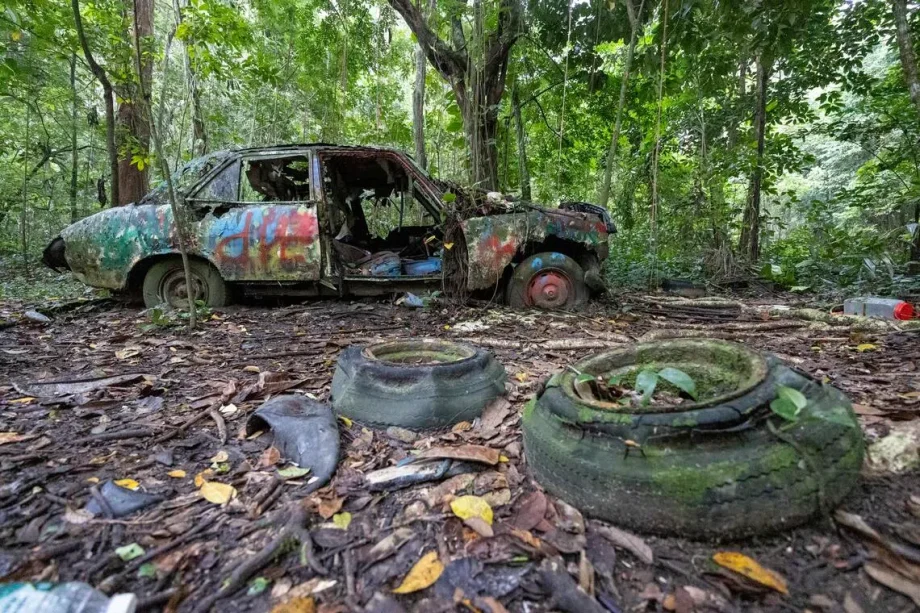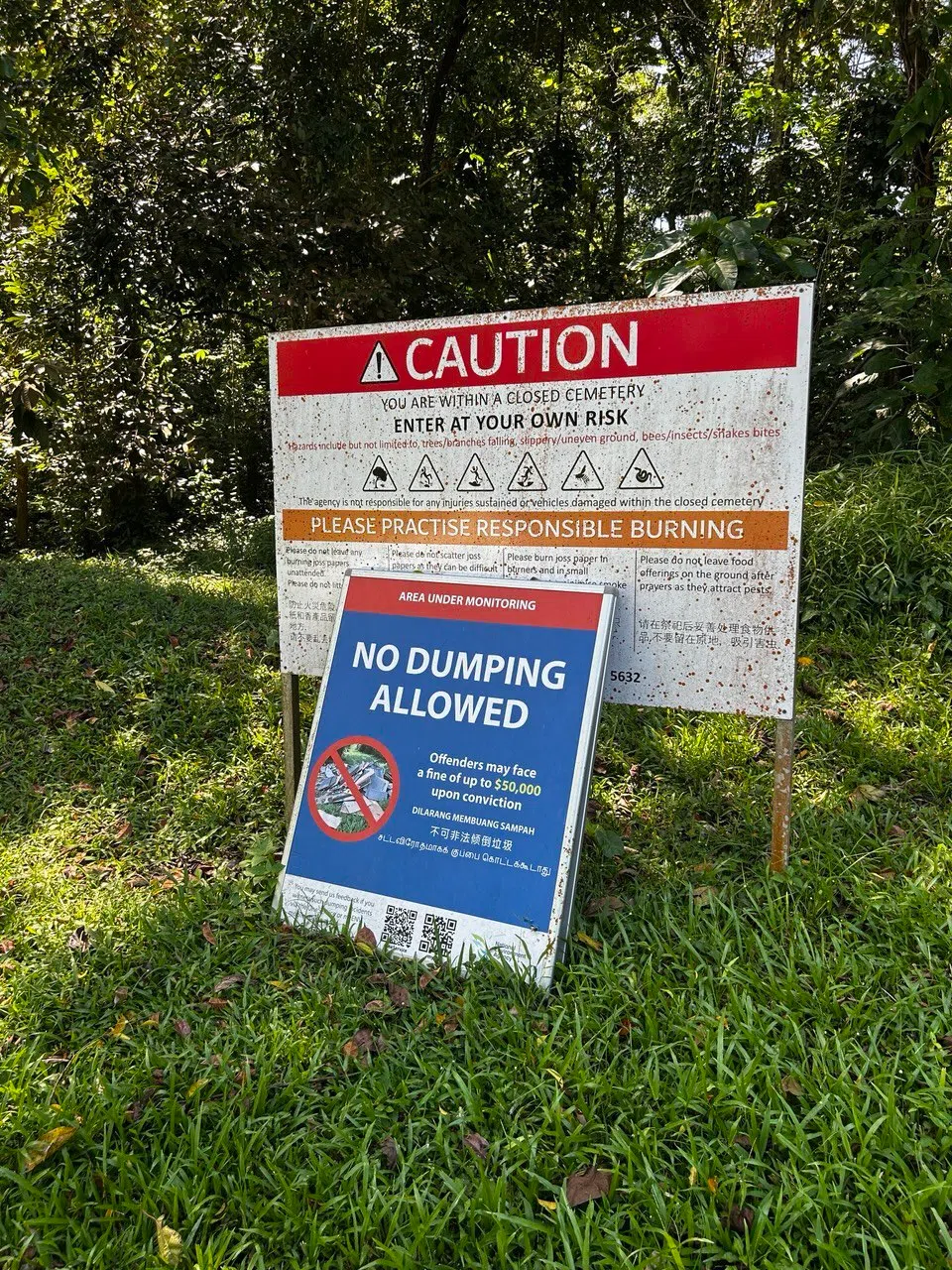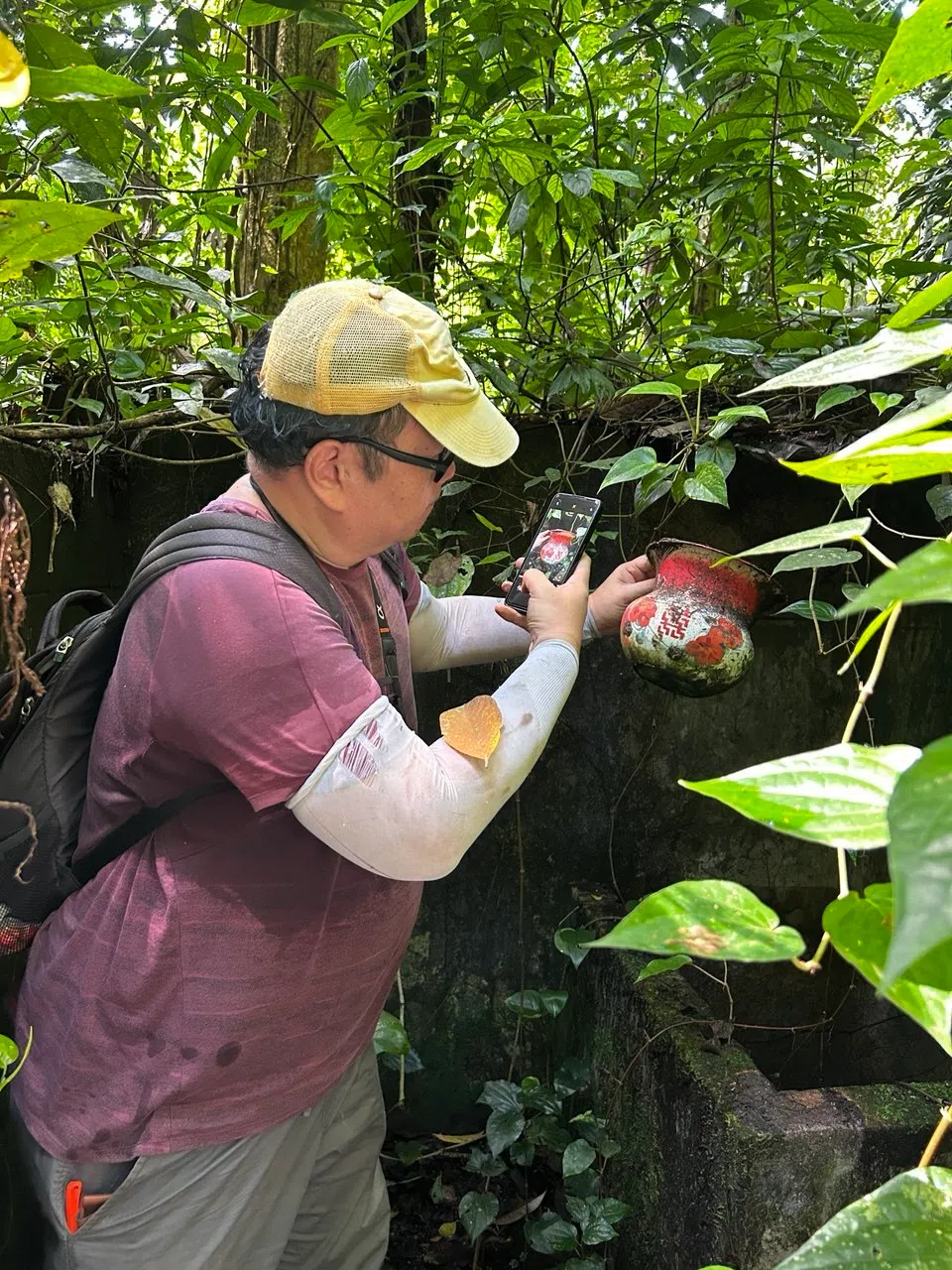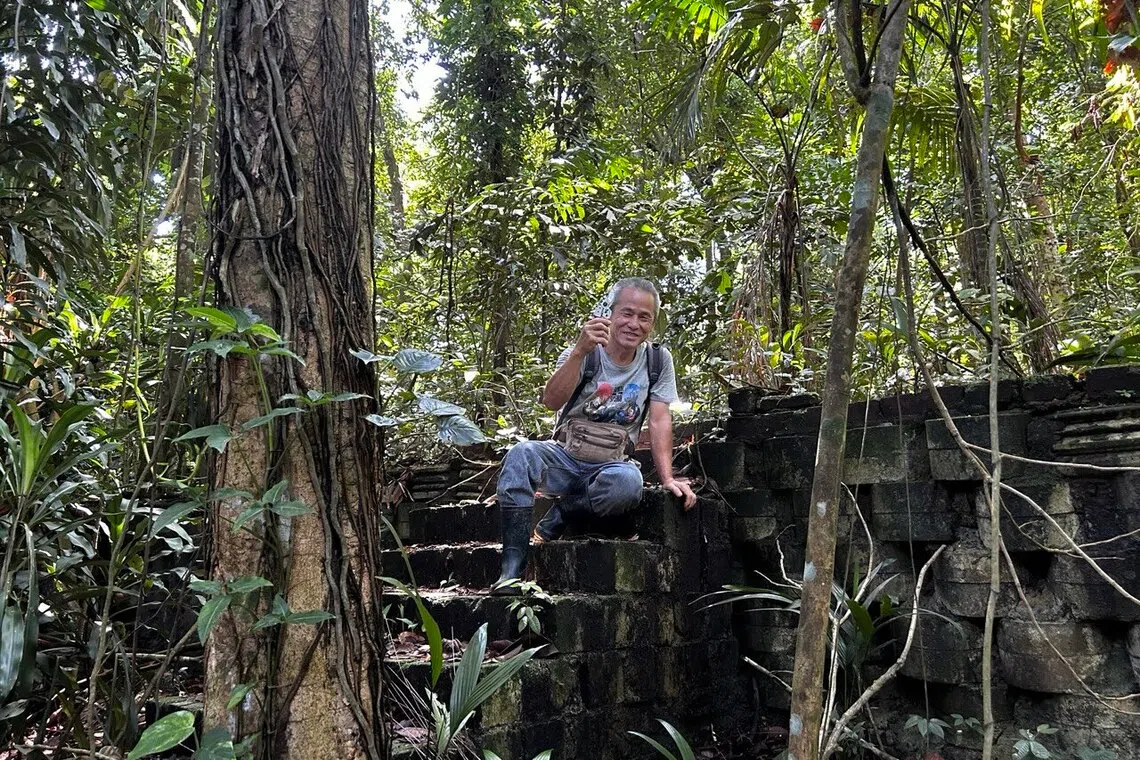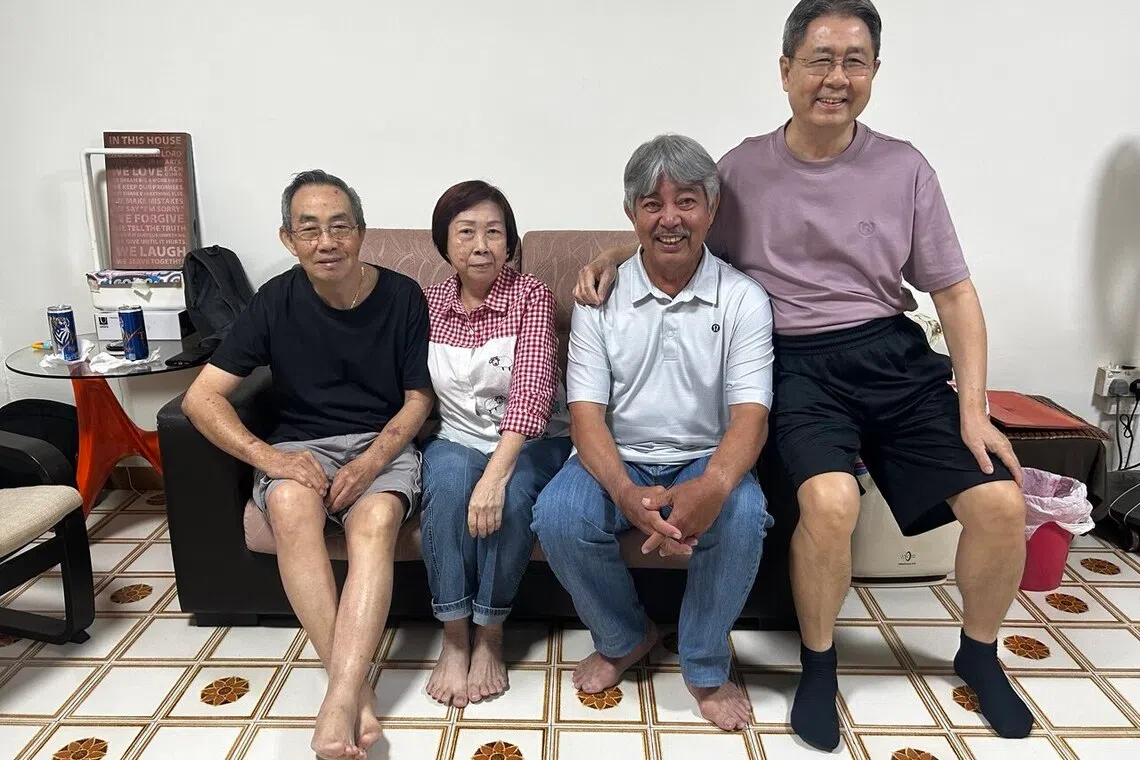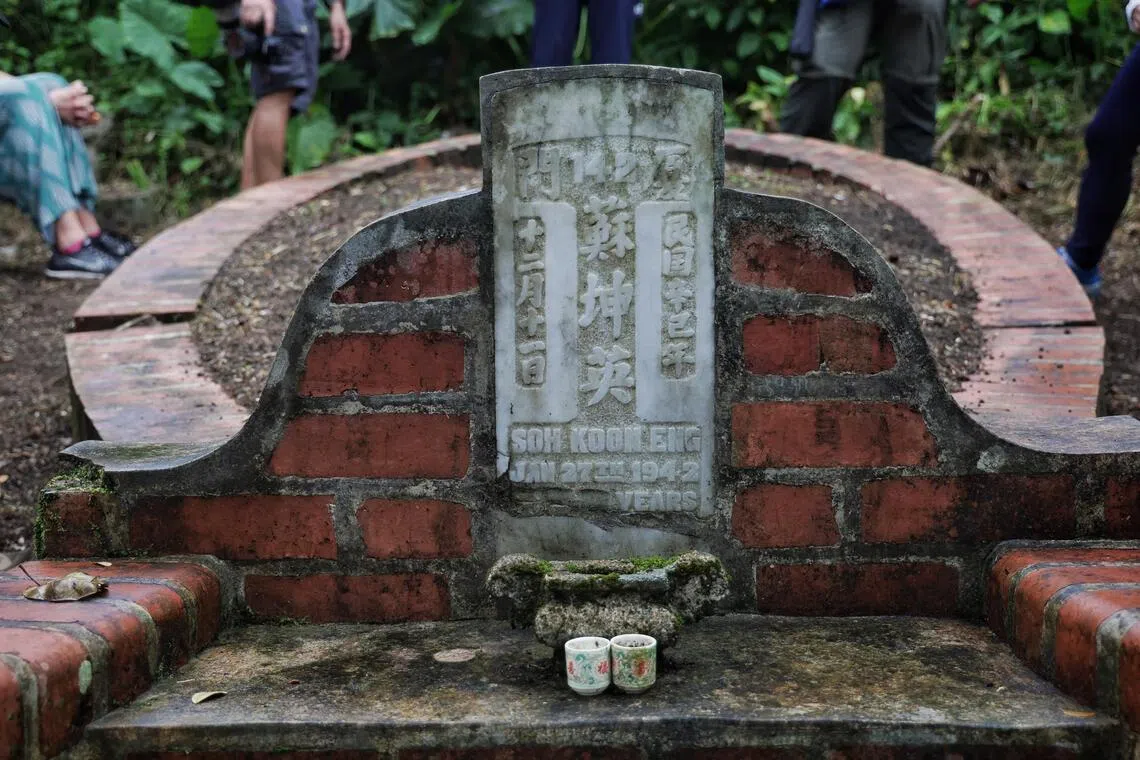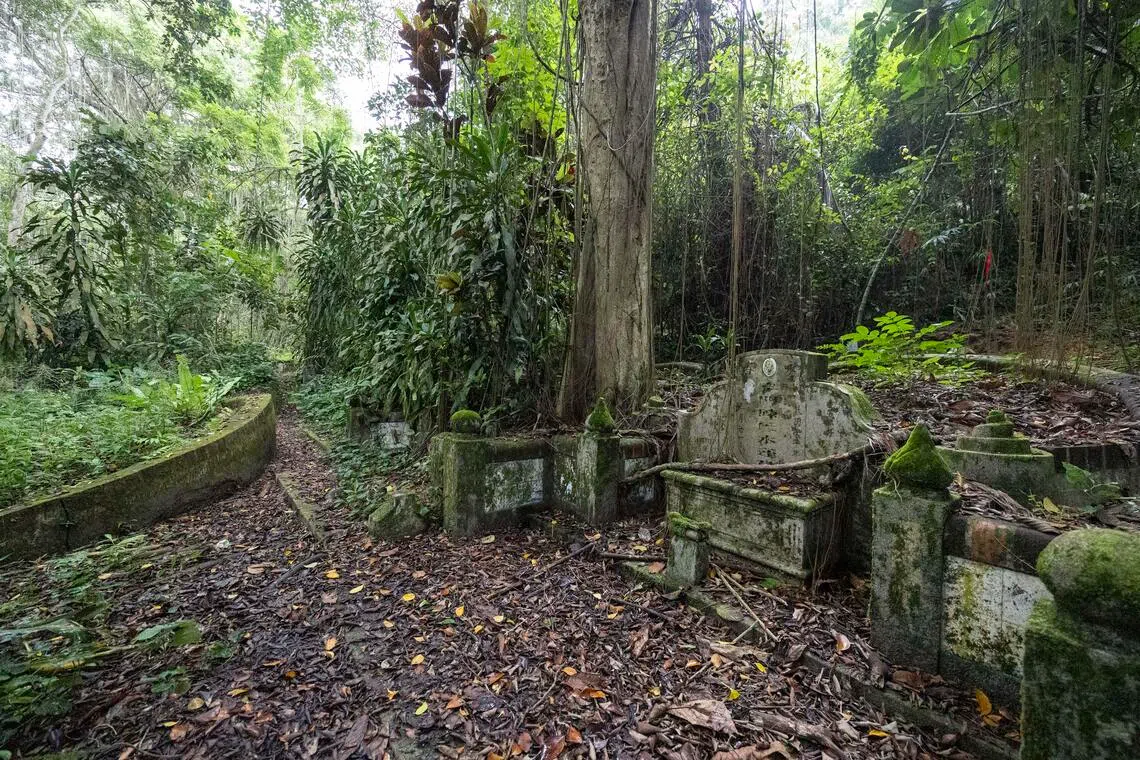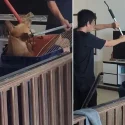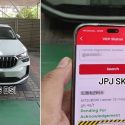SINGAPORE – I stand on a patch of soil, flecked with rubber debris, and try to imagine the scene: Was it a car crash? Four vehicles hightailing it through the forest, meeting their messy end in a tangle of vines and branches? Were they flung off the nearby Pan-Island Expressway (PIE) and left to dissolve into obscurity thereafter?
They make a surreal scene, cars from the 1970s scattered beneath the canopy in various states of disrepair. Two retain a recognisable shape, though time and spray paint have chipped away at the original coat.
The front door of one has been removed, as if waiting for someone to slide into the driver’s seat and grip the mossy steering wheel with both hands, maybe even give the radio a go, though who knows what eerie frequency it might be tuned to these days.

The dashboard of one of the abandoned cars in Greater Bukit Brown.
ST PHOTO: BRIAN TEO
The third lies some distance away in a roofless heap. The fourth, mostly trampled into the soil, is identifiable only by its steering wheel. Around the cars are strewn other enigmas: a bowling pin in a boot, a Senma rubber sandal camouflaged by dried leaves. The path leading in is strewn with spare tyres and car parts.

A steering wheel sticking out of a pile of debris.
ST PHOTO: BRIAN TEO
This is the climax of my brief hike through the wilds of Bukit Brown, guided only by a point on Google Maps that marks the start of the Abandoned Car Trail.
I had seen photographs of the cars online and was gripped by curiosity, unable to believe this scene truly existed in a country as blanched of intrigue – or so it sometimes seems – as Singapore.
Surely it will all make sense in context, I thought, and so set off on an unmarked path through the woodland behind the famed cemetery.
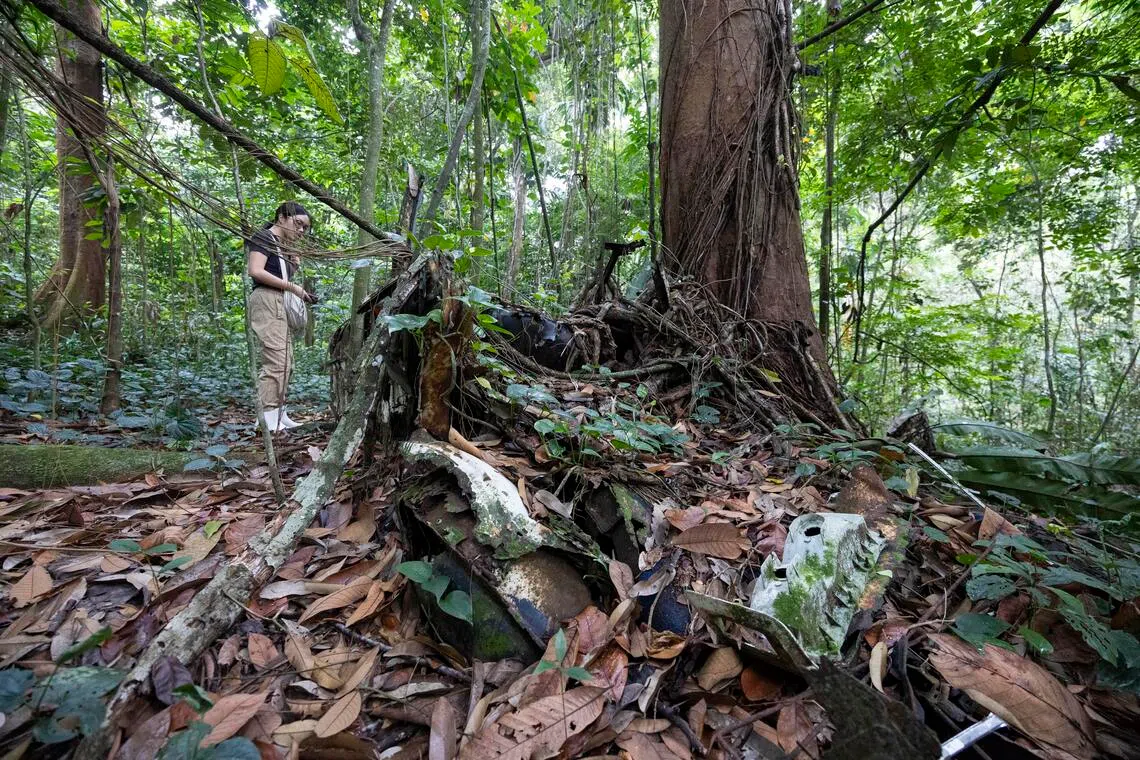
The dilapidated exterior of one of the cars, with its roof caved in.
ST PHOTO: BRIAN TEO
Yet, as I find myself in the middle of this uncanny graveyard, I am left with more questions than answers: How did the cars get here? Why have they not been moved? And what does it all mean?
I start by searching for answers in the comment section of YouTube, where many a hiker has documented his or her attempt to reach the cars, and Facebook, where others have raised similar questions. Here is where fiction ends and a more measured version of reality takes over.
The consensus, as I gather, seems to be that the cars are remnants of a junkyard or mechanic’s workshop back when Lao Sua – the part of Greater Bukit Brown, where the cars were found – was a bustling village.
This is corroborated by news articles, fished out of the depths of the SPH archive by my librarian colleagues. A 2011 piece in The Sunday Times bears this detail: “Villagers remember there was a car repair shop there by the 1980s.”
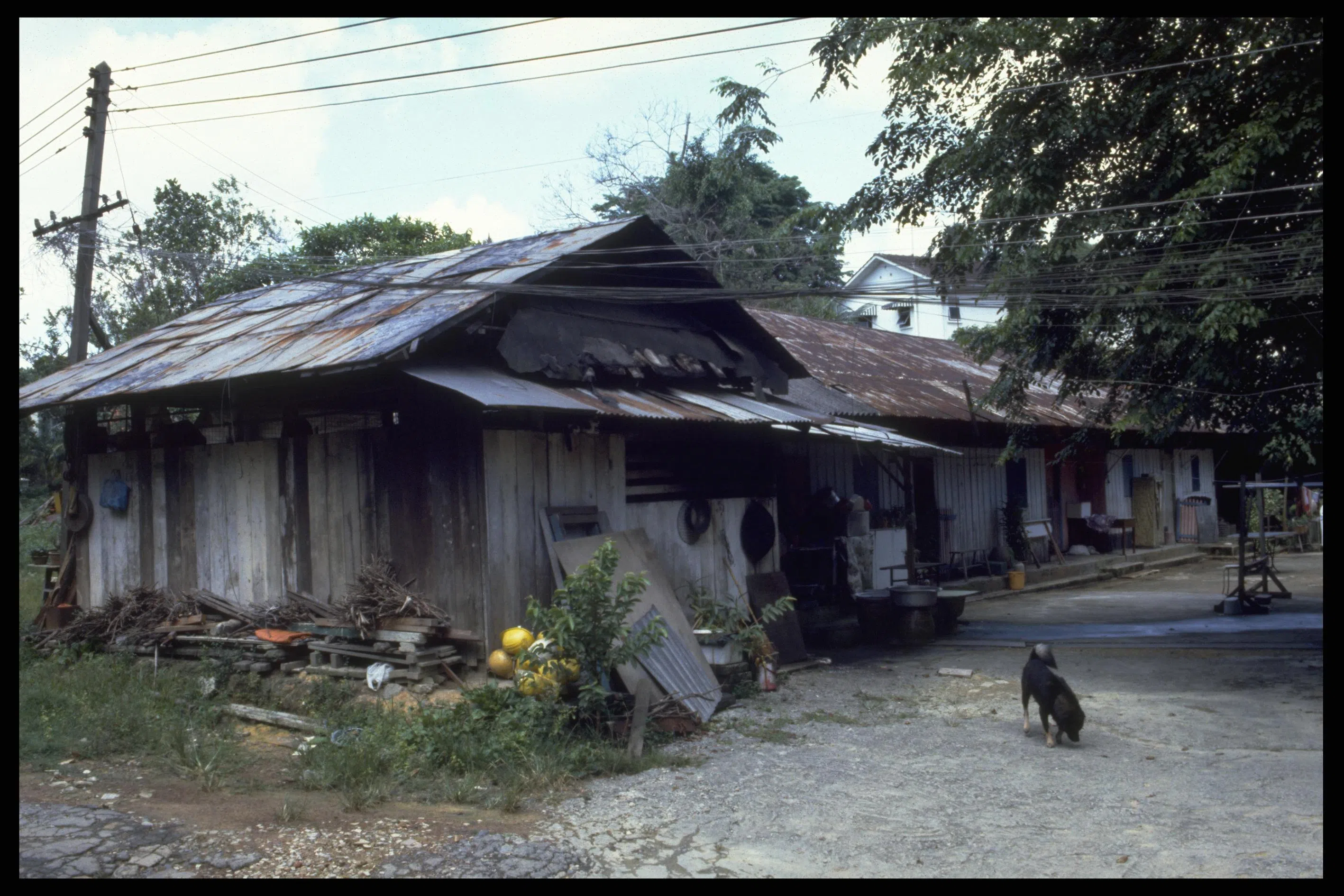
A kampung in Kheam Hock Road in the 1980s.
PHOTO: NATIONAL ARCHIVES OF SINGAPORE
This story, and eight other clippings, sketch an approximate portrait of the village, which reportedly started with a single family in the 1910s. By 1984, it housed some 200 families within wooden walls – “a stark contrast” to their neighbours’ concrete bungalows, noted The Straits Times piece published that year.
Kheam Hock village was a place where the living and the dead dwelled side by side in a sort of uncertain harmony that was under threat from as early as 1971. The Public Works Department had then announced in a gazette notification that the graves off Lorong Halwa and Kheam Hock Road were in the path of the proposed PIE. “More than 1,700 graves on the affected site will be exhumed”, was ST’s grave pronouncement.
The Government took back the land in the early 1980s, the residents were urged to relocate over the next few years, and the last villagers moved out shortly before the turn of the century.
But not everyone has left for good. Several villagers were raised to care for the dead, and it is to the dead that they return every day, sweeping tombs and polishing headstones till this day.
Former Lao Sua resident Soh Ah Beng, who is in his 60s, is one such tomb keeper. He spends most of his daylight hours at Bukit Brown, caring for the dead on behalf of their descendants, who pay him for his services. It is his expertise I tap on my return to the cemetery, following him off the sun-beaten path and deep into the trees.

Grave hunter Raymond Goh spends many of his weekends in Bukit Brown.
ST PHOTO: CHERIE LOK
With us are Bukit Brown regulars Raymond Goh, 61, a pharmacist, and Peter Pak, 52, an IT project manager. They often help families locate the resting places of their ancestors and, along the way, tell me what they know of the workshop that may have left these vehicles behind.
It was, according to a former mechanic whom Mr Goh had spoken to, not an official business. There was no signboard, nor was it likely registered. It probably popped up to serve the needs of residents, parked along a small dirt road veering off the main thoroughfare.
Driving was, after all, becoming more commonplace by the second half of the 20th century. In Jalan Singapura: 700 Years Of Movement In Singapore, historian Eisen Teo traces the steady ascension of motorised vehicles: A 1955 government masterplan logged around 50,000 motor vehicles, of which some 31,000 were cars. Just 20 years later, that number had swelled to over 143,000 cars and 280,000 vehicles in total.

A faded Toyota logo can be spotted on one of the cars.
ST PHOTO: BRIAN TEO
The two cars still relatively intact may have been fairly popular models – at least one was likely a Toyota Corona, by the estimate of vintage car enthusiast Jimmy Fong, 29, who runs the blog SG Classic Rides.
Why, then, did the villagers not take the cars with them when they left in the 1980s?
“They must have been beyond repair,” muses Mr Pak. “Some of these were used for just spare parts.”
“Cars require money to fix. It might have been easier to just leave them here,” Mr Soh points out in Mandarin.

